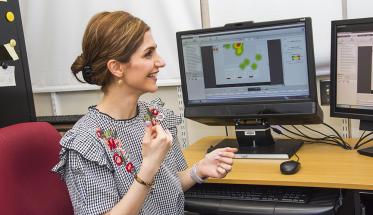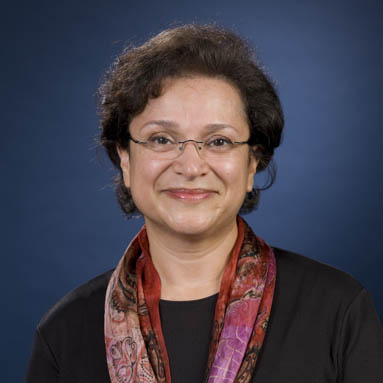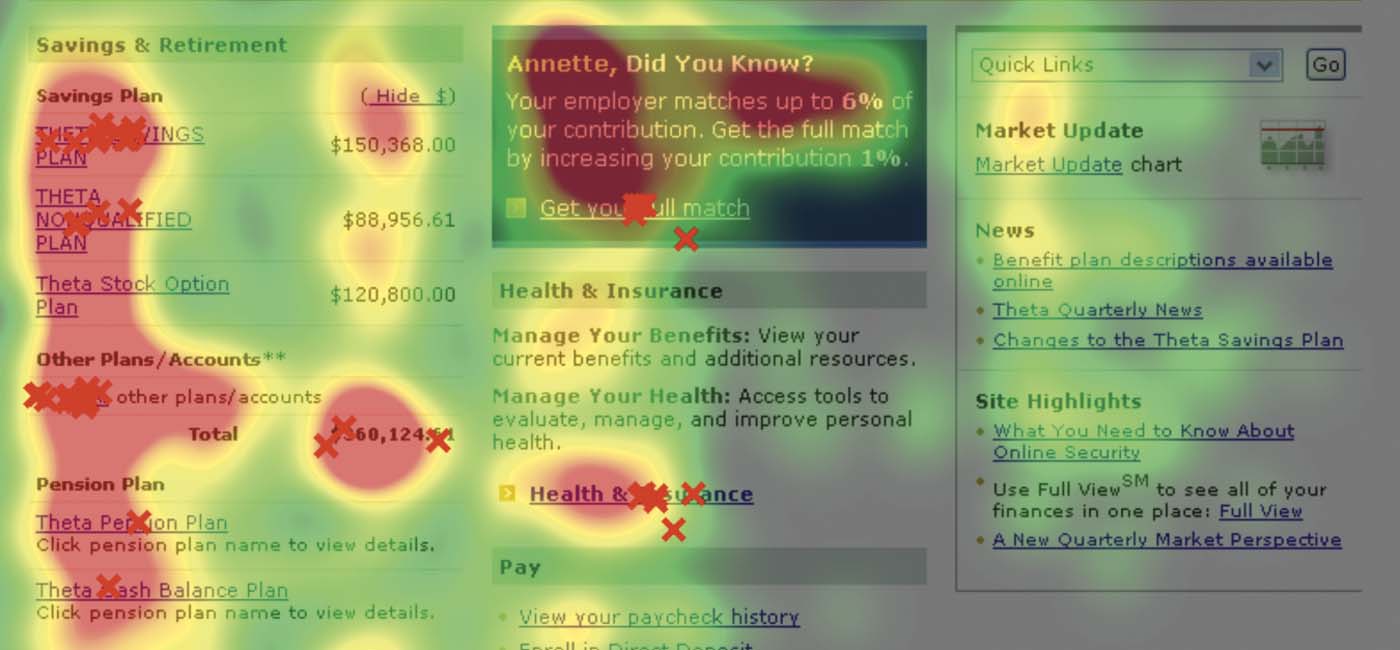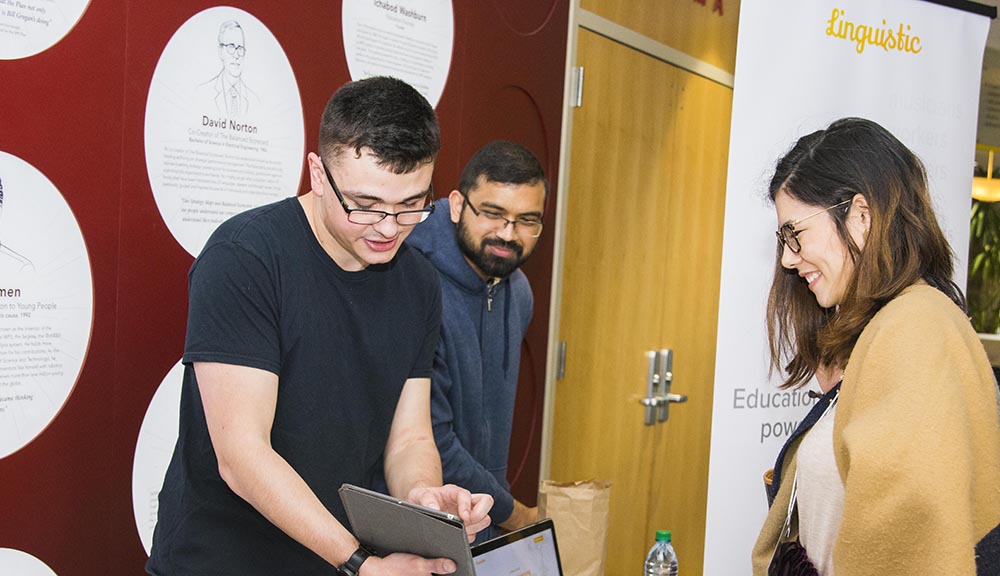When Mina Shojaeizadeh left her homeland of Iran to come to the United States in 2010 to work on her master’s degree in physics, she chose WPI because of its location. It was close to Boston and major corporations where she could intern or work, and not far from New York, where her brother lived.
But in 2014 when Shojaeizadeh had her master’s in hand and decided to go for her PhD, location was no longer driving her decision. She stayed at WPI because of the supportive and tight-knit community she found here. And she stayed at WPI because here she found an interdisciplinary focus in an emerging technology that allowed her to build on her science education and expand into a field that will allow her to change how people interact with technology.
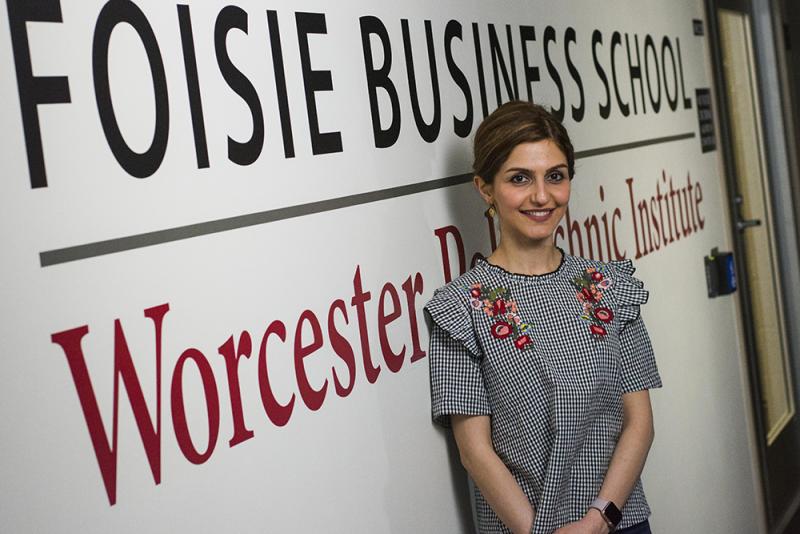
Mina Shojaeizadeh is the first student to receive a PhD
from the Foisie Business School.
After nearly a decade of studying, teaching, and building a community she vows she’ll never leave, Shojaeizadeh is the first student to receive a PhD from WPI’s Foisie Business School. Tomorrow she'll receive a doctorate in Information Systems, with a concentration on Innovation with User Experience.
“When I’m old, maybe when I’m 80, I hope WPI calls and asks me to come give a talk to graduating students about being the first Foisie PhD,” quipped Shojaeizadeh, sitting just a few doors down from her lab. “WPI changed everything for me. It really changed my path.”
Her research focuses on human-computer interaction, or HCI, which is about the design of computer interfaces and how people best receive and use information on them. Her focus, though, dives down into using eye-tracking technology, machine learning, and data analysis to understand a user’s state of mind—or cognitive state—so that website, app, and decision support system developers can create personalized experiences.
The way someone’s eyes move over a page offers a lot of information about how well they are taking in or understanding the information there. Are they becoming overwhelmed or stressed while searching for something—or are they becoming confused?
Soussan Djamasbi, associate professor in the Foisie Business School, director of the newly launched Innovation with User Experience (IUX) graduate program, and head of its User Experience and Decision Making Research Laboratory, explains that this work is likely to dramatically change the way people use not only websites, but apps and other information systems—from client facing decision support systems like retirement planning and health and wellness tools to employee facing or internal corporate systems, such as executive dashboards, financial or marketing decision support systems.
Picture a day when a user, for instance, opens a system geared to helping her calculate her retirement needs. The system will track how her eyes move over the text and images. It will recognize if the user rereads certain sentences or graphs or if she seems to repeatedly search for links. The system might conclude this is an older user and not only automatically make the font larger but also reorganize the page, change the colors of images and links, and even adjust the terminology or provided information to better match the need of the user during his or her decision making process.
Simply put, they will be systems that automatically change based on each user’s needs.
“Using neuro information systems (NeurolS), specifically eye-tracking, to design innovative user experiences for decision support systems is a new and leading edge scientific field,” says Djamasbi, who has been Shojaeizadeh’s PhD advisor. “The potential this line of work has is to provide personalization at a level that has never before been possible. It’s a symbiotic relationship that boosts the user’s cognitive capability.”
That kind of work was exactly what Shojaeizadeh was hoping for.
“I was looking to do research about people, something that can improve people’s lives. This does that,” she says. “Finding a better way for people to interact with technology is very hot right now. A lot of older people use the Internet to keep track of their health, to chat and connect with their friends and children. Why not improve their experience?”
“WPI changed everything for me. It really changed my path ... I’m sure I won’t lose my connection here. I love this lab and I’m involved with research here. Even if I go work for a company somewhere else, I don’t want to lose WPI. I’m not done with this school.” -Mina Shojaeizadeh
For instance, she had an internship last summer at Fidelity Investments in Boston, which, like other large companies such as Amazon and Google, is working on enhancing the user experience for its customers in different age groups, like millennials and older generations.
Shojaeizadeh, who has been working at WPI as a teaching assistant and has trained other students to use eye-tracking technology in their own projects, has been right there in the mix, developing machine learning models that can detect and predict user’s level of mental stress, as well as their age, and how well they’re going to understand a web page.
The fact that she has a background in science (with a master's in physics) and now is focused on information systems and business gives her a unique skill set.
“Physics gave me a background in data analysis and mathematics taught me how to be a self-learner and a critical thinker,” she says. “I love science but HCI was a better choice for me. Business made the science more practical. I have this science background and now what do I do with it? Let’s use business to put it into practice.”
Djamasbi said her student’s academic background is unique but it’s far from the only thing that makes her stand out.
“Mina can envision something and build something new drawing from all these different areas,” she explains. “To be able to envision how a technology can help people and create a social and business value is unique with her. And the fact that she came here from Iran to a different culture, leaving her family and home behind, shows an enormous passion for science and technology. When you do that, only one thing keeps you motivated—your passion for knowledge.”
Studying at WPI not only immersed her in a new culture, but helped her grow—fast.
“As it is for any student who comes from afar, you have to adapt to a new environment and a new language,” she points out. “I was 24 when I came to the U.S. I had to teach physics in the first two weeks I was here, so it pushed me to adapt quickly. I was little bit shy. I knew English from studying in school but interacting and talking with people is very different. Now I have more confidence teaching in English than in my own language.”
Studying and working at WPI also helped her learn to adapt to challenging situations and hold up under stressful situations. Sadly, her strength and adaptability were recently put to the test.
Just a few weeks before graduation, she filed her thesis from the airport as she prepared to fly home to Iran to get married. While she was still in the airport waiting to depart, she received word that her beloved grandmother had died. Once she was home in Iran, she attended her grandmother’s funeral and then took care of myriad details so just days later she could marry a man she had met at WPI. Then she flew back to attend her graduation.
“I was walking on campus today after being away for two weeks," she says, "and I thought, ‘Oh my God. I am going to miss this school,’” adding that she hopes to bring research from a future employer back here for WPI students to work on and build a connection between industry and academia.
“But I’m sure I won’t lose my connection here. I love this lab and I’m involved with research here. Even if I go work for a company somewhere else, I don’t want to lose WPI. I’m not done with this school.”
- By Sharon Gaudin
